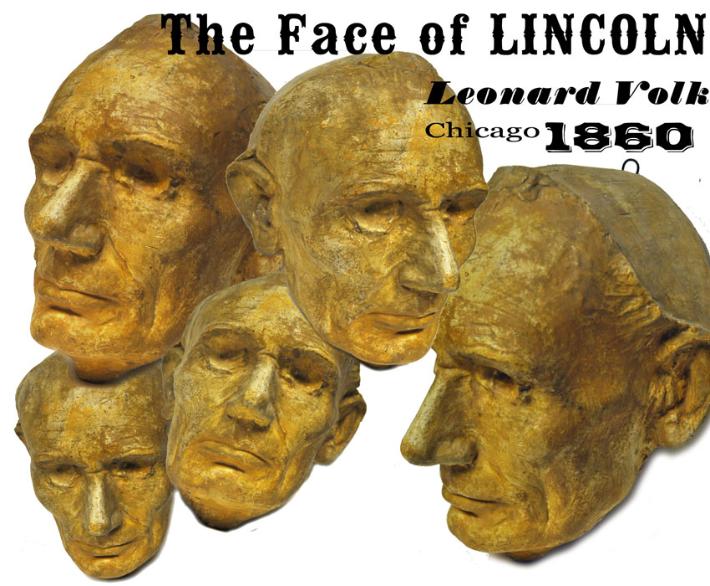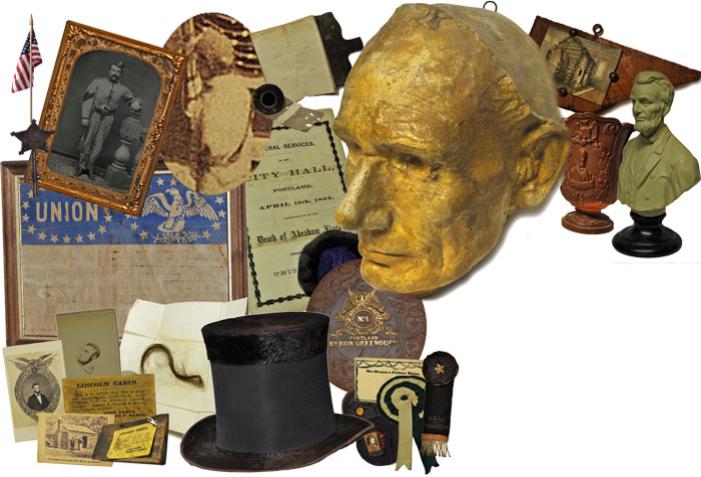



A plaster life mask taken of Lincoln’s face by
Leonard Volk in Chicago in 1860.
Upon his Chicago visit in the spring of 1860 Lincoln was asked by sculptor Leonard Volk if he would come to his studio for the purpose of doing a bust portrait. Lincoln agreed but we will never know if he realized what was in store as the artist decided to take a life mask casting as a lasting reference for his work. The established procedure for the task was followed. It has been said that Lincoln well tolerated the process of letting wet plaster dry on his face and the arduous task of removing the set plaster in one piece but afterward commented that the experience was anything but agreeable. Upon viewing the final casting from Volk’s pattern Lincoln advised that it looked like the animal himself.






